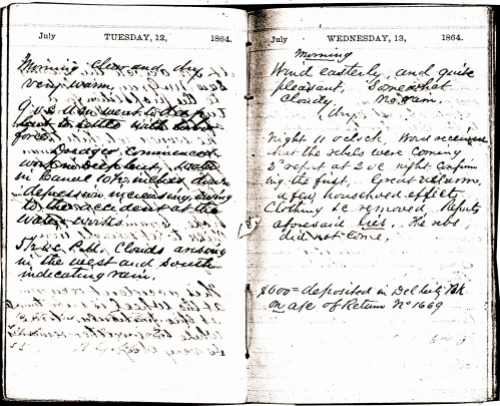On December 7, 1941, a serene Sunday afternoon two and a half weeks before Christmas in Cecil County, many people returned home from church and settled down to enjoy the remainder of their day. Some fidgeted with radios, slowly turning knobs and dialing up Sammy Kaye’s Sunday Serenade on the NBC Red Network. Others enjoyed a family meal and conversation or read the Sunday newspaper. As sweet, melodic orchestra music filled many homes and clocks ticked unhurriedly toward 2:30 p.m. a news flash interrupted the tranquility.
All conversation abruptly stopped as startled families gathered around the radio to hear an excited broadcaster say: “President Roosevelt said in a statement today that the Japanese have attacked Pearl Harbor Hawaii from the air. I’ll repeat that–President Roosevelt says that the Japanese have attacked Pearl Harbor in Hawaii from the air. . . .” Later, another newscaster reporting from Honolulu warned: “This is no Joke! This is war!”
While smoke slowly cleared at Pearl Harbor, the nation faced a stark, cold reality. A sneak attack dealt a damaging blow and we were at war. Bracing to do its part, Cecil immediately went on a war footing by manning aircraft observation stations and posting security personnel at critical installations. But this was only the beginning for soon tremendous activity, which drastically altered the county, came to the high granite bluff overlooking Port Deposit.
As the Navy urgently needed facilities to train untold numbers of seaman, government officials searching for a large tract of land descended on property with a scenic view of the Susquehanna River. After negotiating with the Jacob Tome Institute, they purchased the institution’s magnificent holdings high above Port Deposit and acquired additional land from farmers and homeowners adjacent to the school.
While crews fenced the 1,132-acre property, trucks, day and night, unloaded large piles of lumber for barracks. Fifteen thousand construction workers, along with a fleet of tractors, bulldozers, and steam shovels, descended on the formerly peaceful land to clear farm fields and woods, erect buildings, and open a navy base in four months. Around-the-clock construction changed the fabric of the land and caused a hustle and bustle in the quiet little river town of 900 as traffic jammed up with crews rushing back and forth. This onslaught of workers filled every available room in town, and restaurants did “a land office business,” reported the Cecil Whig.
Enlistees started arriving in October 1942 when “45 rather nervous young men from Pittsburgh piled off a Navy bus with overnight bags in their hands,” while a military band serenaded the recruits by playing Anchors Aweigh, reported the Philadelphia Bulletin. Referring to it as the Great Lakes of the East, the newspaper speculated that it would be the “Alma Mater for thousands” of young men during the difficult times ahead.
Calling it a $50-million miracle since nearly four months to the day shovels broke ground for these arrivals, Captain Charles F. Russell told the recruits they would have to endure some discomforts because “some things we want you to have aren’t finished yet,” reported the newspaper. This is “because we are fighting a war which had been thrust upon us. We did not have these facilities ready because we were not seeking war.”
Named in honor of Commodore William Bainbridge, commander of the famous frigate Constitution, “it grew to enormous proportions, with hundreds of barracks, training halls, classrooms, gymnasiums and mess halls quickly raised on the property and at its peak the center nearly 35,000 recruits,” says At the Head of the Bay. The center’s swollen population brought prosperity to the neighboring town and by the war’s end in 1945, nearly 250,000 servicemen had passed through its gates.
Bainbridge was deactivated as a training center in 1947, but when the cold war blazed up in Korea the Navy needed the center again. This ramping up to help push back communists invading South Korea began in 1951; young sailors began preparing the neglected center to receive recruits. Working with contractors, they hustled about, repairing broken windows, scrubbing the barracks, and making general repairs since tens of thousands of recruits would pump life back into the hushed base.
At its peak during this war, the base had a population of 55,000 and was one of the country’s largest naval bases, he recalled. During its existence, it served as the home for several service schools providing technical training for recruits and fleet sailors. Radiomen, hospital corpsmen, dental technicians, electricians, storekeepers, personnel men, and yeomen were among those trades. But during the 1970s, the base withered. By the time the doors closed on March 31, 1976, barracks, unused for years, were choked with weeks and the water system leaked badly.
The “enormous amphitheater, where Bob Hope and Milton Berle entertained troops was full of saplings,” reported the Record of Havre de Grace. The U.S. Naval Training Center, Bainbridge served the nation for 34 years as a recruit training center. “When the colors were lowered for the last time . . . signifying the closing of the famous base where thousands of Navy recruits were trained,” there were tears in the eyes of onlookers, the Cecil Whig reported.














